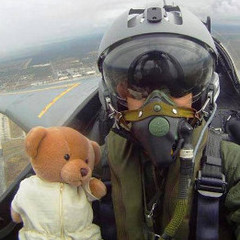-
Posts
125 -
Joined
-
Last visited
Recent Profile Visitors
The recent visitors block is disabled and is not being shown to other users.
-
https://www.digitalcombatsimulator.com/en/files/3316312/ https://www.digitalcombatsimulator.com/en/files/3316644/ https://www.digitalcombatsimulator.com/en/files/3316317/ https://www.digitalcombatsimulator.com/en/files/3316305/ https://www.digitalcombatsimulator.com/en/files/3316298/
-

Gun reticle accuracy and seat height [user problem]
Rifter replied to Rifter's topic in DCS: F-5E Tiger II
Can't use the numeric keypad for head position because my keyboard doesn't have one. Therefore I'm doing it exactly the same way as you in all other modules. In the F-5 however my default position is quite good with respect to the distance to instrument panel. Just head height is a little to much. -
Confirmed - seat height cannot be adjusted with pilot body visible. It used to work in the past.
-

Gun reticle accuracy and seat height [user problem]
Rifter replied to Rifter's topic in DCS: F-5E Tiger II
After some additional testing for the A/A1 and A/A2 sights I cannot find any discrepancies with the reticle respectively with the simulated collimator functionality. I come to the conclusion it is a self-inflicted ergonomic issue. Being to lazy to adjust head position in VR (be it by seat height or head position) I lived with a disadvantageous reticle position (upper border of projection glass) which subsequently led to unnecessary head movements when trying to follow the reticle leaving the projection glass which again led to upper body and therefore right hand movements (=bad for precise maneuvering). Conclusion: The not exactly small dispersion of F-5 guns + ignoring basic ergonomics = bad combination. -

Gun reticle accuracy and seat height [user problem]
Rifter replied to Rifter's topic in DCS: F-5E Tiger II
Yes, a physically build collimator produces an image of parallel light beams which should be perfectly parallel with the longitudinal axis of the aircraft it is aligned with, without any parallax at infinity. Therefore the reticle should be seen at any eye position (at least as long as the eye position is within the volume of collimated light). That’s why I never bothered about my head position. Initially I started playing around with it in the F-5 because I was so perplexed by the deviation between reticle position and gun hits. I’m to inconsistent in bombing to safely rule out a placebo effect for the head position (probably it is a placebo effect). But for the calculated AA gun sights it made a difference. Reason might be that the seat height adjustment helps to center the reticle on the headup projection glass. That is not the case with the default height setting. In my case I had the tendency to move my head around to compensate the inconvenient reticle position which can of course imply further inaccuracies during aiming, especially in VR. Having a nicely centered reticle on the projection glass might be one of the reasons for the seat height adjustment in the first place... -

Gun reticle accuracy and seat height [user problem]
Rifter replied to Rifter's topic in DCS: F-5E Tiger II
Found this old thread: These two pictures show what I realised with the seat height variation: In the first picture it is obvious that the seat is in the most upper position because the guns are visible. In the seat down position the reticle would have pointed a good portion upwards and would have correlated far better to the actual impact point (second picture). Interestingly within that whole thread no-one took seat height position into account. But to be fair, most of the DCS F-5 pilots find their way around the problem by trial and error and an individual depression setting for the reticle… -

Gun reticle accuracy and seat height [user problem]
Rifter replied to Rifter's topic in DCS: F-5E Tiger II
Yes, for the gunsight modes, primarily A/A2 against constant rate maneuvering targets. But also for fixed gunsight the reticle depression values of the dive bombing tables suddenly make sense with lowered seat position compared to the default position (maximum up position). For air to air with fixed gunsight I never bothered because I’ve always chosen my own reference and ignored the reticle. I don’t know which adjustment height the F-5 incorporates for the seat but in VR it feels like 10cm from top to bottom and taking into account the short distance of the head to the headup display glass I guess 10cm create a noticeable impact for the line of sight. On a side note: With the pilot body set to visible the seat height adjustment doesn't work at all...probably a bug. -
https://developer.nvidia.com/rtx/dlss/get-started DLSS Super Resolution: For the SDK v3.7.0 you need at least driver version 471.11. For Streamline Plugin 2.4.0 at least driver version 522.25.
-
Perhaps this is useful for F-5 beginners: When using guns on the F-5 I was always amazed by my poor hit rate and blamed it on my total incompetence. Lately I played around with air targets and could not even score a hit when I stuck the nose of my F-5 into the engine exit of my target (I'm exaggerating a bit now). Actually the reticle in the HUD always seemed kind of off to me. Since I never used the seat height adjustment I decided to check whether it influences the accuracy of the gun reticle. And yes: Putting the seat into a down position suddenly made the guns hit where the reticle points at. I didn't know that! Could not find anything about that in the forum either. Hence: I'm only playing in VR - so I don't know how the seat height effects the reticle accuracy on pancake.
-
Sorry, ich war für Monate hier nicht aktiv. Vielleicht nutzt es trotzdem noch dem einen oder anderen. https://github.com/drosoCode/Offculus Hier gibt es ein Tool mit dem man ein Backup der eigenen Oculus-Installation vornehmen kann. Das lässt sich dann auf einem anderen Rechner wieder reinstallieren. Könnte man im Prinzip auch von Hand machen, aber das Tool ist bequemer, insbesondere hinsichtlich dem zwingend erforderlichen Registry-Backup. In der hosts-Datei unter C:\Windows\System32\drivers\etc kann man dann die Verbindung zur Außenwelt kappen: # localhost name resolution is handled within DNS itself. # 127.0.0.1 localhost # ::1 localhost 127.0.0.1 securecdn.oculus.com 127.0.0.1 secure.oculus.com 127.0.0.1 id.oculus.com 127.0.0.1 www.oculus.com 127.0.0.1 www2.oculus.com 127.0.0.1 scontent.oculuscdn.com 127.0.0.1 graph.oculus.com Für ein Rollback zu einer älteren Runtime muss man sich im Internet bedienen. Das sind dann Backups von anderen Usern. Oculus bzw. Meta bietet das natürlich nicht an. Ich nutze eine Version von 2019, von der an die Performance in DCS nach und nach in den Keller ging. Da DCS keine erweiterten Features von Oculus nutzt (wie z.B. ASW 2.0), funktioniert das einwandfrei. Auch OpenXR funktioniert mit dieser alten Version fast problemlos (der Turbo-Mode vom OpenXR-Toolkit bringt die alte Runtime allerdings zum Absturz).
-
I would also love to know what kind of available background knowledge went into the modelling of the Tomcat ACLS system since there is not much information around. And the stereotyped ‘it was not 100% reliable’ is something that sounds like a welcomed excuse. The only information I ever stumbled over was the story of a F-14A pilot who said that a non-working ACLS system was due to factory faults: Wrong sized beacon antennas and wrong (‘backwards’) mounted coupling actuators for the pitch commands to the horizontal stab which led to pitch up manoeuvres when pitch down was needed and vice versa. But when the aircraft was set up properly on the technical side the ACLS would fly ‘rails’ to a 3 wire.
-
Was bei Diskussionen rund um VR immer wieder gerne übersehen wird: Bei der Bildwiederholfrequenz in VR geht es nicht primär um die Frage, ab welcher Bildfrequenz ein Nutzer das Bild als “flüssig” empfindet, wie auf einem 2D-Monitor. Die entscheidende zusätzliche Anforderung ist die Überlagerung des bewegten Bildes mit der Kopfbewegung des Nutzers. Dies (und praktisch nur dies!) hat überhaupt zum Wert von 90 Bildern pro Sekunde als Grundanforderung bei VR Brillen geführt. Genau 90 müssen es zwar nicht sein (die 80 der Rift S funktionieren auch), aber unterhalb von ca. 70 Bildern pro Sekunde ist es rein technisch/physikalisch schon nicht mehr möglich, bei raschen Kopfbewegungen eine dazu passende Bildinformation zu liefern, da die Bildwiederholrate bzw. die benötigte Bildinformation der Kopfbewegung hinterher hinkt. Ich kenne Leute, die eine frenetische Abneigung zur VR-Zwischenbilderzeugung pflegen (Motion Reprojection) und sich in VR regelrecht bestimmte Kopfbewegungstechniken angewöhnt haben, um das Problem zu umschiffen, dass sie eigentlich mit viel zu wenig Bildern pro Sekunde unterwegs sind. Die gucken dann in bestimmten Situationen nicht zur Seite oder bleiben mit dem Blick im Cockpit, bis es wieder halbwegs flüssig wird. Und erzählen dann, dass eigentlich alles ganz “flüssig” läuft, weil ja 60 Bilder pro Sekunde für einen kontinuierlichen Bewegungseindruck ausreichend sind.
-

Su-25T - Can't assign Axis Command: TDC Slew with HOTAS
Rifter replied to Mesos's topic in Flaming Cliffs 3 Bugs & Problems
It’s ‘IT-23 targeting display’ for the Su-25T - not TDC slew. -

A thought on Open XR and other Variables
Rifter replied to MVS-Viper's topic in Multi-Threading Bug Reports (Temp)
Have a look at this tool: https://github.com/drosoCode/Offculus You can create your private standalone version of Oculus runtime with your present v47 or any desired version (provided you have backups of them). I’m running my Rift S with version 1.43 from 2019 as a standalone system without any connection to Oculus/Meta. Fetched the old version from the web, a couple of people archived them. Stunning performance and no compatibility problems. Even OpenXR is working fine although it can only be switched on and off by registry. See also old thread here: -
That option is old. It is for so called single pass stereo rendering. It renders both left and right eye images at the same time in VR. It enables the GPU to share culling for both eyes. The GPU iterates through all objects in the rendering scene for only one time for the culling and then renders the reminding objects that were left over after the culling process. It can boost VR performance significantly. But sometimes it comes with rendering errors (different light effects for left and right eyes for example). This feature was never completed or approved by ED.





